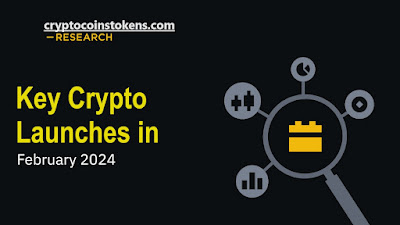Render Token (RNDR): Powering a Decentralized Rendering Future - A Deep Dive
In the realm of cryptocurrency, innovation often sprouts from challenges faced by traditional industries. One such example is Render Token (RNDR), a project aiming to revolutionize the computationally intensive world of 3D rendering through the power of decentralization. This article delves deep into RNDR, exploring its technology, potential, and current position within the crypto landscape.
What is RNDR?
RNDR is a utility token built on the Ethereum blockchain that powers the Render Network, a decentralized platform for rendering high-quality visuals. The network connects content creators (requesters) who need rendering power with GPU owners (providers) who can offer their idle processing capacity. This peer-to-peer model eliminates the need for centralized rendering farms, potentially offering cost savings and increased accessibility for creators.
Key Features of the Render Network:
- Decentralization: The network operates without a central authority, ensuring transparency and resilience against potential disruptions.
- Efficiency: By leveraging distributed GPU resources, the network aims to achieve faster rendering times and lower costs compared to traditional centralized farms.
- Security: The Ethereum blockchain provides a secure platform for transactions and asset management.
- Transparency: All transactions on the network are publicly viewable, fostering trust and accountability.
Render Token (RNDR) Statistics and Insights:
- Total RNDR supply: 536.87 million
- Circulating supply: 376.15 million
- Market cap: $1.55 billion
- All-time high: $8.78 (November 2021)
- Current price: $4.10 (January 20, 2024)
- 24-hour trading volume: $152 million
- Top exchanges: Binance, BlueBit, UEEx, OKX, Bybit
The Problem: Bottlenecks in Traditional Rendering
3D rendering is a crucial process for creating stunning visual effects in movies, games, architecture, and other media. However, traditional rendering setups suffer from several limitations:
- High Costs: Renting powerful rendering farms can be expensive, especially for smaller studios and individual creators.
- Accessibility: Access to high-end rendering hardware is often restricted to a limited pool of professionals.
- Centralization: Dependence on large studios or cloud providers creates a single point of failure and limits creative control.
RNDR's Solution: A Decentralized Rendering Network
The Render Network leverages blockchain technology to address these issues by creating a decentralized marketplace for rendering power. Here's how it works:
- Creators: Artists and designers upload their 3D assets to the network, specifying the desired rendering quality and budget.
- Node Operators: Individuals with idle GPUs can register their hardware as nodes on the network, contributing their rendering power to the pool.
- Tokenomics: RNDR tokens are the native currency of the network. Creators pay node operators in RNDR for their rendering services.
- Proof of Render: A custom consensus mechanism ensures fair resource allocation and secure rendering. Tasks are broken down into smaller chunks, distributed across nodes, and verified on the Ethereum blockchain.
Technology and Tokenomics:
- RNDR Token: An ERC-20 token used for payment within the network. Creators spend RNDR to pay node operators for their rendering services.
- Proof of Render: A unique consensus mechanism where successful rendering tasks validate transactions, ensuring network security and resource allocation efficiency.
- OctaneRender Integration: The network currently utilizes OTOY's OctaneRender, a high-performance GPU renderer, but plans to integrate other renderers in the future.
Market Overview and Performance:
As of January 20, 2024, RNDR holds a market cap of approximately $1.55 billion, ranking among the top 50 cryptocurrencies. While it reached an all-time high of $8.78 in November 2021, it currently trades around $4.10, reflecting the broader market downturn. However, despite the price dip, RNDR exhibits encouraging signs:
- Growing Network Adoption: The number of nodes and creators on the network continues to rise, indicating increasing project usage and community engagement.
- Strategic Partnerships: Collaborations with prominent players like Decentraland and Sketchfab highlight RNDR's potential integration into established creative ecosystems.
- Development Roadmap: The team actively expands the network's capabilities, with plans for additional render engine integrations and improved user interface/experience.
Challenges and Potential Future Trajectory:
- Competition: Established cloud rendering services and emerging decentralized competitors pose challenges for RNDR's widespread adoption.
- Technical Complexity: Integrating diverse render engines and maintaining network stability in a decentralized setting require ongoing technical innovation.
- Market Volatility: Like other cryptocurrencies, RNDR remains susceptible to market fluctuations, potentially impacting project development and user confidence.
Despite these challenges, RNDR's unique solution to a longstanding problem in the creative industry holds immense potential. The growing demand for high-quality 3D content across various sectors – from gaming and movies to architecture and product design – could fuel the network's expansion. As the project matures and overcomes hurdles, RNDR could become the go-to platform for decentralized rendering, empowering creators globally with affordable, accessible, and scalable GPU power.
Disclaimer: This article is for informational purposes only and does not constitute financial advice. Please conduct your own research before making any investment decisions.
Additionally, I encourage you to explore the following resources for further information:
- Render Network website: https://rendernetwork.com/
- Render Token whitepaper: https://rendernetwork.com/
- CoinMarketCap page: https://coinmarketcap.com/currencies/render/




Comments
Post a Comment